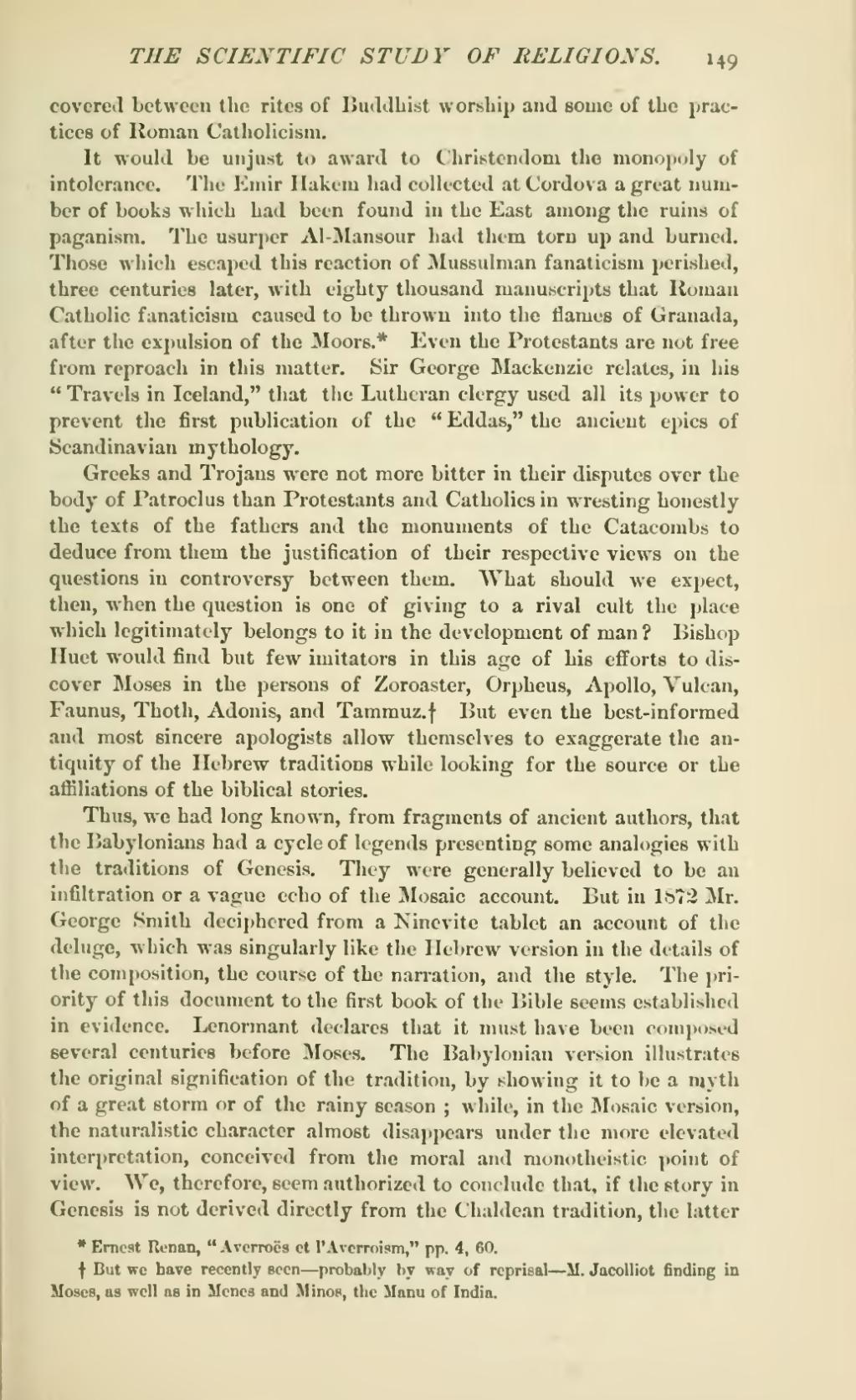covered between the rites of Buddhist worship and some of the practices of Roman Catholicism.
It would be unjust to award to Christendom the monopoly of intolerance. The Emir Hakem had collected at Cordova a great number of books which had been found in the East among the ruins of paganism. The usurper Al-Mansour had them torn up and burned. Those which escaped this reaction of Mussulman fanaticism perished, three centuries later, with eighty thousand manuscripts that Roman Catholic fanaticism caused to be thrown into the flames of Granada, after the expulsion of the Moors.[1] Even the Protestants are not free from reproach in this matter. Sir George Mackenzie relates, in his "Travels in Iceland," that the Lutheran clergy used all its power to prevent the first publication of the "Eddas," the ancient epics of Scandinavian mythology.
Greeks and Trojans were not more bitter in their disputes over the body of Patroclus than Protestants and Catholics in wresting honestly the texts of the fathers and the monuments of the Catacombs to deduce from them the justification of their respective views on the questions in controversy between them. What should we expect, then, when the question is one of giving to a rival cult the place which legitimately belongs to it in the development of man? Bishop Huet would find but few imitators in this age of his efforts to discover Moses in the persons of Zoroaster, Orpheus, Apollo, Vulcan, Faunus, Thoth, Adonis, and Tammuz.[2] But even the best-informed and most sincere apologists allow themselves to exaggerate the antiquity of the Hebrew traditions while looking for the source or the affiliations of the biblical stories.
Thus, we had long known, from fragments of ancient authors, that the Babylonians had a cycle of legends presenting some analogies with the traditions of Genesis. They were generally believed to be an infiltration or a vague echo of the Mosaic account. But in 1872 Mr. George Smith deciphered from a Kinevite tablet an account of the deluge, which was singularly like the Hebrew version in the details of the composition, the course of the narration, and the style. The priority of this document to the first book of the Bible seems established in evidence. Lenormant declares that it must have been composed several centuries before Moses. The Babylonian version illustrates the original signification of the tradition, by showing it to be a myth of a great storm or of the rainy season; while, in the Mosaic version, the naturalistic character almost disappears under the more elevated interpretation, conceived from the moral and monotheistic point of view. We, therefore, seem authorized to conclude that, if the story in Genesis is not derived directly from the Chaldean tradition, the latter
